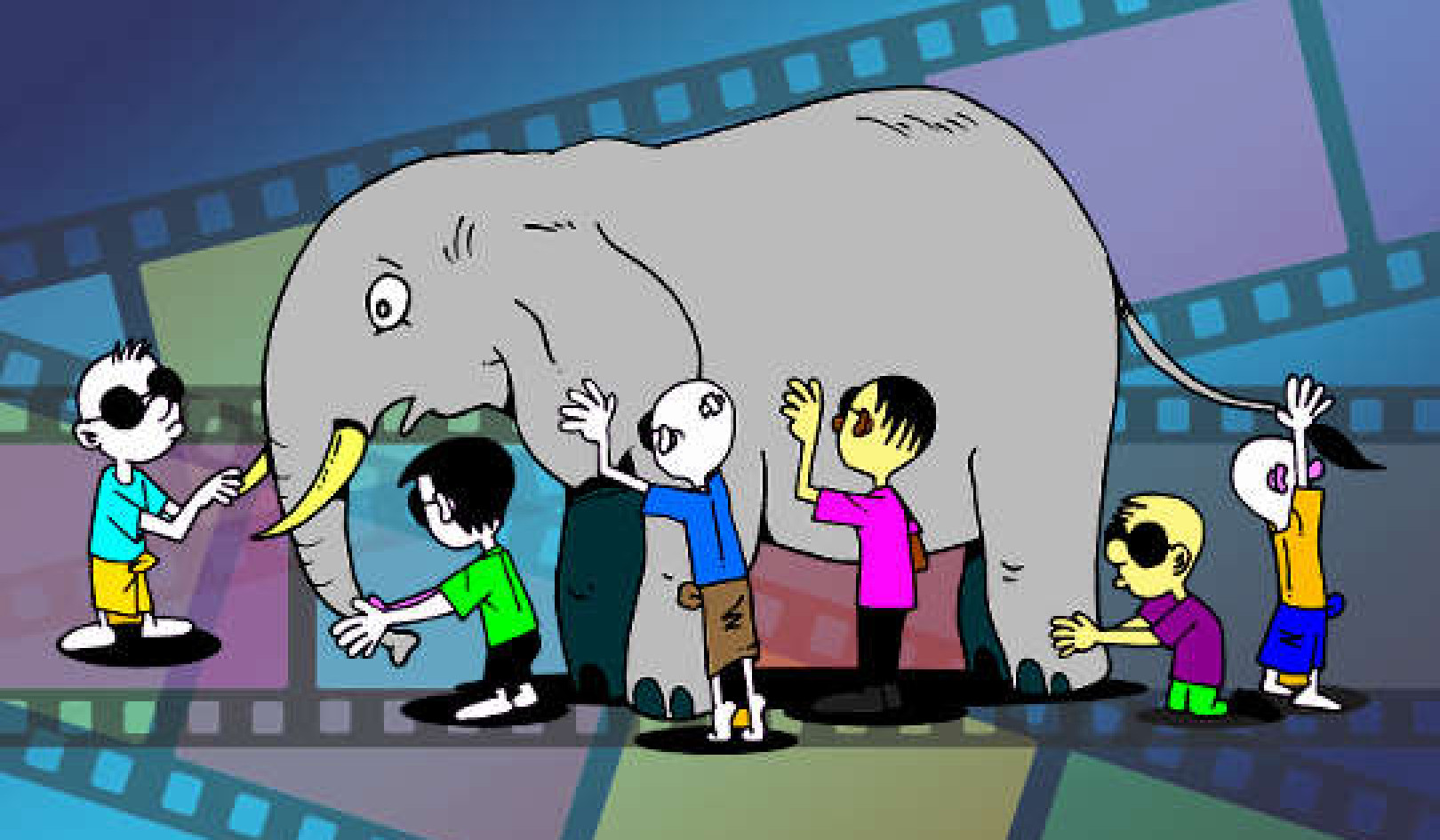
Image by Couleur
Find out who you are, and do it on purpose.
—Dolly Parton
Sometime in the twelfth or thirteenth century, a group of Thai monks commissioned the construction of a gold statue of the Buddha. For five hundred years or so, the statue remained essentially untouched, passing from generation to generation of monks. In 1767, the statue was completely plastered with a thick layer of stucco to conceal it from an invading Burmese army, which was intent on destroying anything of value.
Although virtually all of the Thai monks perished in the Burmese attack, the strategy to protect the statue worked. For almost two hundred years after the invasion, the statue remained housed in a temple in Bangkok among other ruins, its true nature and value having been forgotten. Then, in 1955, the statue had to be moved to another section of the temple.
During the move, the statue was accidentally dropped, cracking the stucco. Closer inspection revealed that the statue was actually made of gold. The plaster was completely removed and the statue restored to its original state. Today, the Golden Buddha shines in all its original glory, standing at more than ten feet tall, weighing over five tons, and valued at more than $250 million.
I am particularly fond of this story. Like Michelangelo’s quote, “I saw the angel in the marble and carved until I set him free,” the story serves as a powerful metaphor—that each of us is pure and precious at our core. You came into this world with a gift, a calling. It is at the core of who you are. Yet, as you have gone through life, you likely added layer upon layer of material on top of your core, mostly to protect yourself, much like the Thai monks did to keep the Golden Buddha safe. The protective layers are the rules of your program. Over time, these layers have likely obscured your unique gift or calling.
The last stage in mastering your code is to discover and commit to your calling. But how do you do this? While everyone’s path will be unique and won’t necessarily follow a straight line, I want to propose a path for the person like you who wants to live life on purpose. There are six essential steps:
- Discover your calling
- Overcome resistance and doubt
- Commit to the path of mastery
- Let go of the outcome
- Have faith
- Embrace your mortality
Step One: Discover Your Calling
The notion of an essential calling is part of almost every religious, philosophical, and spiritual tradition. In Indian philosophy and religion, it is known as dharma.
While there is no one definition of dharma, the meaning given to it by the yogic traditions is for me the most useful. Essentially, it is claimed that each human being has a unique, essential sacred vocation. It is each individual’s responsibility to completely embody, nurture, and fulfill this calling.
The Japanese have the concept of ikigai. It means “reason for living” or “the reason for getting out of bed in the morning.” Ikigai is described as the intersection of four things: what I love to do, what the world needs, what I can get paid for, and what I’m good at. Dan Buettner, the author of The Blue Zones: Lessons for Living Longer from the People Who’ve Lived the Longest, argues that people who have a culture of ikigai, like the Okinawans, tend to live longer. He has found the same to be true of other “blue zones”—people who live with and out of a sense of purpose tend to have longer lives.
As a child, you may not have been fortunate enough to have parents, teachers, or other adults in your life who were able to discern and reflect your calling. I certainly didn’t, or at least I didn’t appreciate or notice the support if it did in fact exist. Perhaps your calling flashed in your shining eyes from time to time but remained dormant throughout your childhood with no one there to nurture it. As an adult, how do you now discern your calling?
I have met and mentored many young adults who ask some form of the same question: “How do I find my purpose in life?” I usually offer the following paradoxical advice: “The harder you search for your purpose, the less likely you are to discover it.”
I explain that your calling or purpose is like a seed that requires the right conditions to grow. Finding it is more about letting go and creating the conditions for it to emerge, the most important of which is patience. It is about noticing what is already there.
Like the gold underneath the stucco on the Buddha statue, it may take years, sometimes decades, for your calling to reveal itself. The key is to let go, be open, and to keep noticing. The more you let go, the quicker your calling will be revealed. Once it emerges, you will know. It will be unmistakable.
Discovering your calling first requires a rewriting of the program that is concerned with looking good and getting ahead. The part of your program that says you’re supposed to do this and not supposed to do that. That says you’re supposed to go to college, then perhaps graduate school, get a well-paying job, build a family, work hard, earn enough money, and then (and only maybe then) have enough time and be sufficiently healthy to truly enjoy life. Don’t get me wrong; this path may very well produce an extraordinary life. But it is highly unlikely to do so unless it is intentional.
An extraordinary life will not happen out of a subconscious adherence to a series of default rules that are designed to avoid risk and keep you safe. If you are living out of your program, you will not have the consciousness to see your calling.
It took me almost four decades to discover my purpose. My essential calling. That which I love to do, that the world needs, that I can get paid for, and that I’m good at. I knew it immediately. My job then became to cultivate it. To do that, we take the next step on the path.
Step Two: Overcome Resistance and Doubt
Once you have identified your calling, the next step is to commit to it fully. To do so is not easy. You must know that there will be significant counterforces that serve as powerful obstacles to fully committing to your calling—the most significant of which are resistance and doubt.
Resistance cannot be seen, touched, heard, or smelled. But it can be felt. We experience it as an energy field radiating from a work-in-potential. It’s a repelling force. It’s negative. Its aim is to shove us away, distract us, prevent us from doing our work . . .
Like resistance, doubt has the same potential to oppose the creator. In the Bhagavad Gita, the definitive Hindu guide to dharma, Krishna’s advice to Arjuna is to avoid vacillation or doubt at all costs. This is a key lesson of the Gita. This does not mean to suggest that dharma requires arrogance or supreme self-confidence. Self-doubt is inevitable, and perhaps essential.
In his marvelous book The War of Art, Steven Pressfield sums it up perfectly:
Self-doubt can be an ally. This is because it serves as an indicator of aspiration. It reflects love, love of something we dream of doing, and desire, desire to do it. If you find yourself asking yourself (and your friends), “Am I really a writer? Am I really an artist?” chances are you are.
The counterfeit innovator is wildly self-confident. The real one is scared to death.
One way to neutralize the forces of resistance and doubt is to change how you think about them. Although there may be a tendency to vilify these forces, I prefer to normalize (and neutralize) them by thinking about them systemically. The tendency of any living biological system—human or otherwise—is toward stability or homeostasis. This fundamental principle of systems is predictable and inevitable. It is why growth is so hard. You see it in your difficulty keeping New Year’s resolutions, in the staying power of dysfunctional families, and in the challenges of organizational change.
When you resist the natural forces of homeostasis, you give them power. When you see them and appreciate them for the natural survival forces that they are, you can find ways to leverage them and convert their energy into growth.
Step Three: Commit to the Path of Mastery
Fully committing to your calling requires that you commit to the path of mastery.
So what is the path of mastery? And how do you stay on it? I believe it requires three things:
- Practice
- Focus
- Surrender
First, mastery requires practice. Despite the popularity of the ten-thousand-hour rule—the notion that mastery requires a minimum of that much practice—it is only a certain type of practice that can result in true mastery (and there is no magic to the ten-thousand-hour mark).
The second requirement of mastery is intense focus and discipline, and the ability to say no to the things that are inconsistent with the thing being mastered. In his book Essentialism, author Greg McKeown argues, “Only once you give yourself permission to stop trying to do it all, to stop saying yes to everyone, can you make your highest contribution towards the things that really matter.”
Third, mastery requires full surrender to the fact that the path to achieving it is never-ending. It is like a mountain with no top. There is no final declaration of success. Practice on the path of mastery is mastery.
Step Four: Let Go of the Outcome
While you must commit to mastering your calling, paradoxically you cannot be attached to the outcome. As Gandhi put it, “Satisfaction lies in the effort, not in the attainment. Full effort is full victory.”
The striving toward the attainment of some end has the perverse effect of pulling you out of the present and away from your calling. To help you understand, let me offer you the distinction between intention and attachment. It is important to have a clear and strong intention, even to an outcome, but to let go of any attachment to that outcome.
It is wise to heed the words of Thomas Merton, one of the most influential Catholic writers of the twentieth century:
We cannot achieve greatness unless we lose all interest in being great. ... And when we are truly ourselves we lose most of the futile self-consciousness that keeps us constantly comparing ourselves with others in order to see how big we are. [Thomas Merton, No Man Is An Island]
Step Five: Have Faith
Letting go of the outcome requires that you have faith in your calling and in your ability to be its servant. In the Bhagavad Gita, Krishna tells Arjuna that he does not own or control his dharma, but rather that he must be of complete service to it. This is a fundamental teaching in that, as we become more conscious, we begin to see the connectedness of everything, including ourselves.
If you are indeed part of everything, then you can begin to see yourself as an empty vessel into which consciousness flows. In the Tao Te Ching, Lao Tzu counsels, “See the world as yourself. Have faith in the way things are. Love the world as yourself; then you can care for all things.”
We are here to be used by our calling, not to use it. This is the essence of seeing yourself as the vessel for your gift to manifest. Stephen Cope, in The Great Work of Your Life, describes how the master Beethoven recognized this in himself:
The music, Beethoven says, seems to be writing itself. The Master now experienced a new dimension of trust in The Gift. He understood that his gift was not personal. That he was not the Doer. That his responsibility was not to create The Gift—that was a done deal—but only to sustain it, to husband it, to nurture it in every way possible.
The point of this final lesson is not to necessarily take it literally. You do not need to be convinced that you are but a vessel through which the gods bring forth a creation that already exists. Yet having some faith that you are being used to bring forth something you can uniquely create is tantalizing. It will allow you to detach more easily from the outcome and to surrender to your calling.
Step Six: Embrace Your Mortality
The fundamental paradox of life and death begs for death’s inclusion. As with any paradox, life and death cannot exist without each other. This is an essential teaching of the ancient texts.
But what of death? What purpose does it have in teaching you about life? Almost every ancient tradition speaks to the importance of embracing your impermanence.
In the Tao Te Ching, it is written that “if you stay in the center and embrace death with your whole heart, you will endure forever.” Impermanence is a central tenet of Buddhism, upon which many of its teachings rest.
The influential philosopher Martin Heidegger described the anxiety of one’s impermanence as “an unshakable joy” because death reminds you that there is no right way to live life. Rather, death is a reminder that you have the responsibility to live your life according to your own choices. For Heidegger, that is the mark of a truly authentic individual.
Perhaps, then, the discovery of the infinite wisdom inside you must begin with an embrace of death. May this book and the slivers of wisdom within it remind you to begin (or continue) peeling back the layers that mask the glory of who you are.
©2019 by Darren J. Gold. All Rights Reserved.
Excerpted with permission from Master Your Code.
Publisher: Tonic Books. www.tonicbooks.online.
Article Source
Master Your Code: The Art, Wisdom, and Science of Leading an Extraordinary Life
by Darren J Gold
 How does anyone get to a point in life where they can say unequivocally say that they feel fulfilled and fully alive? Why are some of us are happy and others unhappy despite almost identical circumstances? It’s your program. A subconscious set of rules that drive the actions you take and limit the results you get. To be extraordinary in any area of your life, you must write and master your own code. This is your guidebook for doing that now. (Also available as a Kindle edition, an Audiobook, and a hardcover.)
How does anyone get to a point in life where they can say unequivocally say that they feel fulfilled and fully alive? Why are some of us are happy and others unhappy despite almost identical circumstances? It’s your program. A subconscious set of rules that drive the actions you take and limit the results you get. To be extraordinary in any area of your life, you must write and master your own code. This is your guidebook for doing that now. (Also available as a Kindle edition, an Audiobook, and a hardcover.)
About the Author
 Darren Gold is a Managing Partner at The Trium Group where he is one of the world's leading executive coaches and advisors to CEOs and leadership teams of many of the most well-known organizations. Darren trained as a lawyer, worked at McKinsey & Co., was a partner at two San Francisco investment firms, and served as the CEO of two companies. Visit his website at DarrenJGold.com
Darren Gold is a Managing Partner at The Trium Group where he is one of the world's leading executive coaches and advisors to CEOs and leadership teams of many of the most well-known organizations. Darren trained as a lawyer, worked at McKinsey & Co., was a partner at two San Francisco investment firms, and served as the CEO of two companies. Visit his website at DarrenJGold.com
Video/Presentation with Darren Gold: Authoring Your Own Identity
{vembed Y=wvkfA4mx4y8}

Related Books:
Atomic Habits: An Easy & Proven Way to Build Good Habits & Break Bad Ones
by James Clear
Atomic Habits provides practical advice for developing good habits and breaking bad ones, based on scientific research on behavior change.
Click for more info or to order
The Four Tendencies: The Indispensable Personality Profiles That Reveal How to Make Your Life Better (and Other People's Lives Better, Too)
by Gretchen Rubin
The Four Tendencies identifies four personality types and explains how understanding your own tendencies can help you improve your relationships, work habits, and overall happiness.
Click for more info or to order
Think Again: The Power of Knowing What You Don't Know
by Adam Grant
Think Again explores how people can change their minds and attitudes, and offers strategies for improving critical thinking and decision making.
Click for more info or to order
The Body Keeps the Score: Brain, Mind, and Body in the Healing of Trauma
by Bessel van der Kolk
The Body Keeps the Score discusses the connection between trauma and physical health, and offers insights into how trauma can be treated and healed.
Click for more info or to order
The Psychology of Money: Timeless lessons on wealth, greed, and happiness
by Morgan Housel
The Psychology of Money examines the ways in which our attitudes and behaviors around money can shape our financial success and overall well-being.
























